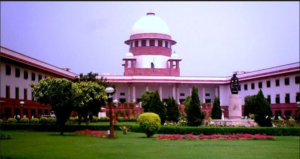Vice President calls for mass media campaign to create awareness about the green homes
New Delhi, 15 Dec 2020: The Vice President of India, Shri M. Venkaiah Naidu today appealed to the Finance Commissions and local bodies to encourage green buildings through various measures including tax incentives. He also wanted all states to create online portals to provide single window clearance to green buildings.
Virtually inaugurating the 12th GRIHA (Green Rating for Integrated Habitat Assessment) Summit, organised by the GRIHA Council from Hyderabad today, the Vice President said that India has the potential to lead the Global Green Building Movement and emphasised the need to promote green building concept by both the private sector and the government. Recognizing that there is a lack of awareness among people about green building concept, he also called for the launch of a mass media campaign on the advantages of building green homes. “Green buildings movement should become people’s movement”, VP said.
Quoting the World Green Building Council data, the Vice President said that buildings and construction account for 39% of energy-related CO2 emissions in the world and called for accelerating the process of total de-carbonization of the built environment.
Noting that “Atmanirbhar Bharat Abhiyaan” envisions making India self-reliant in all spheres, the Vice President re-emphasised the need for sustainable development and wanted awareness to be increased among the people in this regard.
Calling buildings as one of the major contributors of greenhouse gas emissions, Shri Naidu said that there is a need for concerted and coordinated efforts from all stakeholders to ensure that the buildings are environment-friendly and energy & resource-efficient. “The construction material we use today should be sustainable—it should not in any way jeopardize the ability of future generations to meet their needs”, he added.
He expressed happiness over several government and private bodies committing to build their future buildings greener. The Vice President wanted every future building to go green mandatorily and said that this should apply to all kinds of building. Not only new buildings, the existing buildings too have to be retrofitted to make them environment-friendly, he added.
Observing that our ancient civilisational values teach us to live in harmony with nature, the Vice President called for revisiting our traditional and nature-friendly house designs refined over thousands of years by our ancestors. “Unfortunately, our modern structures are such that no sparrow can come and make a nest in our house. This is not our culture” he said.
Warning that climate change is real and impacting us, Shri Naidu called for a balance between economic development and environmental protection. Economy and ecology can coexist if one respects nature, he said.
He said that the current year has been a tumultuous one due to COVID-19 pandemic and a number of natural calamities in the form of floods, droughts and other extreme weather events. Thus, there is an absolute need to reorient our approach to development as the decisions we make today will have repercussions far beyond our own lifetimes, he warned.
Noting that least half of the country’s population will live in towns and cities by 2050, the Vice President said that this will create a lot of pressure on housing sector and green solutions will have to be developed to meet the emerging needs.
Opining that the roof cooling should be an area of priority for all, Shri Naidu mentioned that in India, over 60 percent of roofs are made from metal, asbestos, and concrete – thus trapping heat inside buildings and contributing to heat island effect in urban areas. Observing that cool roofs offer a simple and a cost-effective solution that can lower indoor temperatures by 2 to 4 degrees Celsius as compared to traditional roofs, the Vice President said that these can be very effective for low-income households and slums in urban areas. Stating that need for air conditioners is expected to rise substantially with improvement in living standards and rise in temperatures due to global warming, he said that Cool roofs can reduce the heat stress in homes and offices and bring down the dependence on air conditioners. Simple techniques such as lime-based paint, reflective coatings or membranes can reflect the sunlight and reduce heat absorption, he added.
Emphasising the need to utilize light and air that is naturally available to us, Shri Naidu said that Covid-19 pandemic has taught us the importance of good air circulation in the buildings reducing the infection rate.
Observing that the implementation of Bureau of Energy Efficiency’s Energy Conservation Building Code (ECBC) has not been uniform across the nation, Shri Naidu appreciated the states of Telangana and Andhra Pradesh for taking a lead in this regard.
He suggested for capacity building at the local level through customized training programs for the architects, engineers, government officials, and builders in energy-efficient buildings.
Praising the work done by GRIHA, VP said that since its inception, it has been a catalyst for the widespread adoption of green development in India and congratulated GRIHA Council on the launch of the upgraded version of its rating system, the GRIHA Version 2019. He also expressed happiness over the fact that despite the pandemic, GRIHA Council has continued in its endeavours to promote the sustainability agenda and has developed the Building Fitness Indicator (BFI) tool – a free-to-use self-assessment tool that allows organizations to measure the preparedness of workplaces to prevent exposure to COVID-19.
On this occasion, the Vice President also launched three e-publications of GRIHA Council namely – 30 Stories Beyond Buildings, Shashwat Magazine and Version 2019 Manual of the Council.
Union Urban Development Minister, Shri Hardeep Singh Puri, President of GRIHA Council, Dr. Ajay Mathur and CEO, GRIHA Council, Shri Sanjay Seth were among the dignitaries who participated in the virtual event.
Following is the full text of the speech –
It is with great pleasure that I join you at the 12th GRIHA (Green Rating for Integrated Habitat Assessment) Summit. The commitment of GRIHA to forge partnerships both nationally and internationally is seen in the multitude of partners, stakeholders and delegates present on this platform today.
As we all are aware, the Government of India is making a determined effort to transform India into a holistically sustainable nation with the involvement of all stakeholders. “Atmanirbhar Bharat Abhiyaan” is the vision of a New India with an aim to make the country and its citizens independent and self-reliant in all spheres. Towards this end, we also need to re-emphasise the concept of sustainable development. There is a need to create awareness on the urgency of promoting the idea of long-term ecological sustainability among the people.
According to the World Green Building Council, buildings and construction account for 39% of energy related CO2 emissions in the world, and the need of the hour is accelerate the process of total de-carbonization of the built environment.
Because buildings are one of the major contributors of greenhouse gas emissions, and the majority of the buildings that will exist in the India in 2030 are yet to be built, there is a need for concerted and coordinated efforts from all stakeholders to ensure the use of construction material that is environment-friendly and the buildings are energy and resource efficient as well. The construction material we use today should be sustainable—it should not in any way jeopardize the ability of future generations to meet their needs.
It is worth noting that Central Public Works Department has committed that all new buildings will be greener. Similar commitments have been made by other government construction agencies. I am told that several private sector developers have also committed that their future construction will be GRIHA complaint. I strongly feel that we should consider making every future building to go green mandatorily and this should apply to all kinds of building. Not only new buildings, the existing buildings too have to be retrofitted to make them environment-friendly.
Apart from efficiency, the green buildings seek to ensure the use of renewable energy, promote waste reduction and encourage the use of environment-friendly local materials. Low carbon technologies have to be extensively promoted and used as well – a green building must use fewer resources and reduce greenhouse gas emissions drastically.
Traditionally our ancestors have been using nature friendly materials and designs in construction of dwelling units. However, we seem to have forgotten those climate-responsive architectural designs, refined over thousands of years. Unfortunately, our modern structures are such that no sparrow can come and make a nest in our house. This is not our culture. Our ancient civilisational values teach us to live in harmony with nature. I have always said that we should love and live with nature and follow our age-old culture… That is the path for a better future.
Sustainable buildings are an important component in building resilient communities and sustainable architecture is Indian tradition. Ancient Indian civilisation has always respected the environment.
It is high time for us to change our approach and ensure design and construction practices that are more sustainable and resilient. By restoring traditional practices of construction and embracing green technology, it is possible to reinvigorate the building sector and encourage harmonious living with the natural environment.
Climate change is real and impacting us. It is imperative for nations to strike a balance between economic development and environmental protection. Economy and ecology can coexist if one respects nature.
This year has been a tumultuous globally due to COVID-19 pandemic. The world has been frequently witnessing a number of natural calamities in the form of floods, droughts and other extreme weather events. Thus, there is an absolute need to reorient our approach to development as the decisions we make today will have repercussions far beyond our own lifetimes. When we talk about sustainable architecture and design, we have to use local, naturally available resources and eco-friendly building materials.
As the nation is passing through a critical juncture and is facing many challenges, innovative solutions and initiatives will be invaluable in tackling pressing problems from the novel coronavirus to climate change. I would also like to congratulate GRIHA Council on the launch of the upgraded version of its rating system, the GRIHA Version 2019, as well as the annual SHASHWAT magazine and the book documenting the extensive collaboration between GRIHA Council and the Public Works Department, Government of Maharashtra.
It gives me great pleasure to learn that over the past year, despite the pandemic, GRIHA Council has continued unabated in its endeavours to promote the sustainability agenda.
I would also like to congratulate GRIHA Council on the development of the Building Fitness Indicator (BFI) tool, a free-to-use self-assessment tool that allows organizations to measure the preparedness of workplaces to prevent exposure to COVID-19.
The 2030 Sustainable Development Agenda highlights crucial linkages between sustainability, the environment, human well-being and a wide range of human rights — including the right to life, safety, food, water and sanitation.
The theme of this year’s summit is “Rejuvenating Resilient Habitats”, and the event centres on preparedness and the need to build infrastructure that is resilient in the event of disaster. Now more than ever it is imperative to strike a balance between social development and economic growth so that a new normal may be defined and unsustainable systems re-configured in the face of climate change and the global pandemic.
Today, urban India contributes about 65% of India’s GDP, which is estimated to increase to 70% by 2030 — an unprecedented expansion that will change the economic, social and environmental landscape of India.
At least half of the country’s population will live in towns and cities by 2050 creating a lot of pressure on housing sector and infrastructure and green solutions will have to be developed to meet the emerging needs.
The main motto of the Government of India is to make cities liveable centres of growth. The Smart Cities Mission is intended to promote cities that provide core urban infrastructure and give a decent quality of life and a clean and sustainable environment to its citizens.
India has the potential to lead the Global Green Building
There is a need to promote green building concept by both the private sector and the government. The Finance Commissions and local bodies should encourage green buildings through various measures including tax incentives.
I feel that roof cooling should be an area of priority for all. In India, over 60 percent of roofs are made from metal, asbestos, and concrete— thus trapping heat inside buildings and contributing to heat island effect in urban areas. Currently, less than 10% of India’s households have air conditioning units but this percentage is expected to rise substantially with improvement in living standards and rise in temperatures due to global warming.
Cool roofs offer a simple and a cost-effective solution that can lower indoor temperatures by 2 to 4 degrees Celsius as compared to traditional roofs. Simple techniques such as lime-based paint, reflective coatings or membranes can reflect the sunlight and reduce heat absorption. These can be very effective for low income households and slums in urban areas. I understand that pilot studies have been conducted in Hyderabad and Telangana is rolling out a cool roof program for the entire state. If implemented effectively, it can reduce the heat stress in homes and offices and bring down the dependence on air conditioners.
We are a huge country and there are many challenges before us. These challenges cannot be met by the government alone and all stakeholders in private and public sectors should join hands in this endeavour.
Reports show that the implementation of Bureau of Energy Efficiency’s Energy Conservation Building Code(ECBC) has not been uniform across the nation with only 15 states and two Union Territories notifying the code so far. I am happy to note that the states of Telangana and Andhra Pradesh have taken a lead in this regard.
There is a need to launch a mass media campaign on the advantages of building green homes as there is a lack of awareness among people about green building concept.
For capacity building at local level, customized training programs are required for the architects, engineers, government officials, and builders in energy efficient buildings. All states should consider creating online portals and provide single window clearance to green buildings.
Since its inception, GRIHA has been a catalyst for the widespread adoption of green development in India.
I once again thank you all for inviting me to the inauguration of this year’s GRIHA Summit. I wish GRIHA Council all the best for this event and for all future endeavours.








